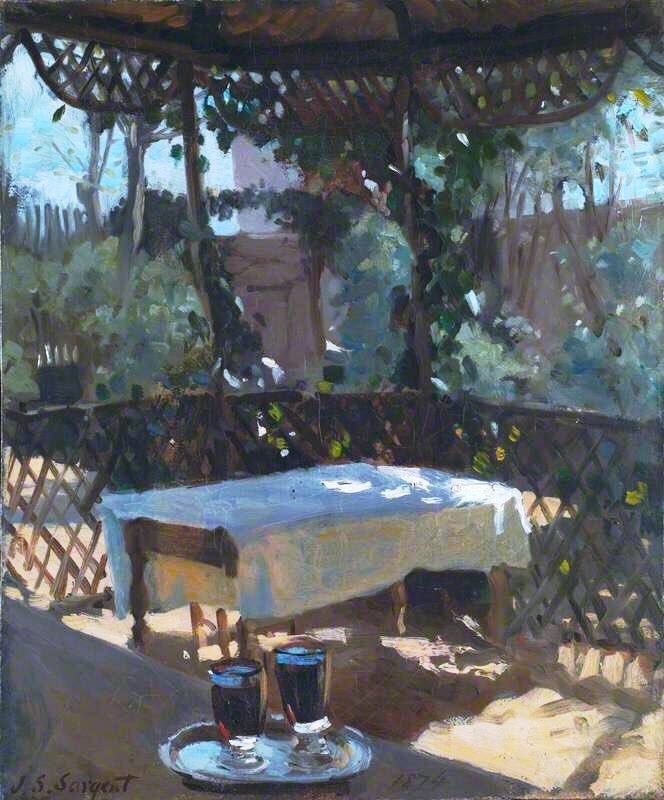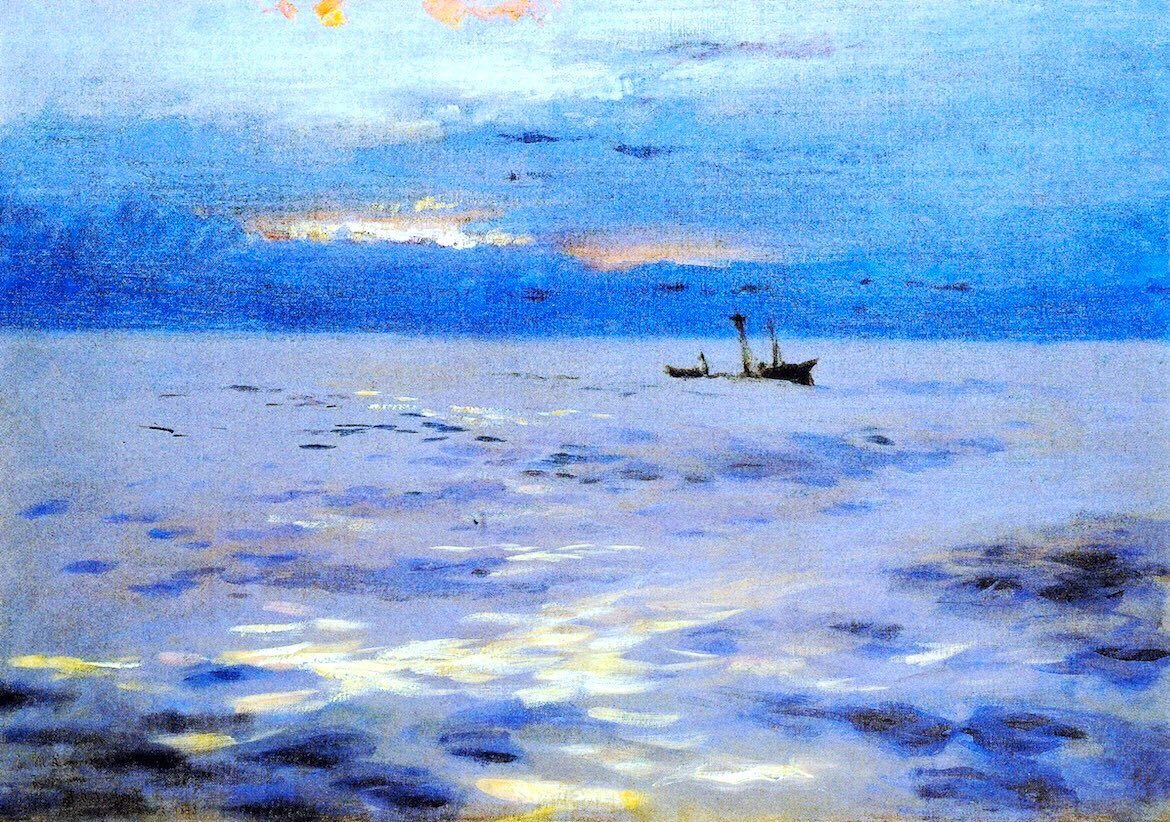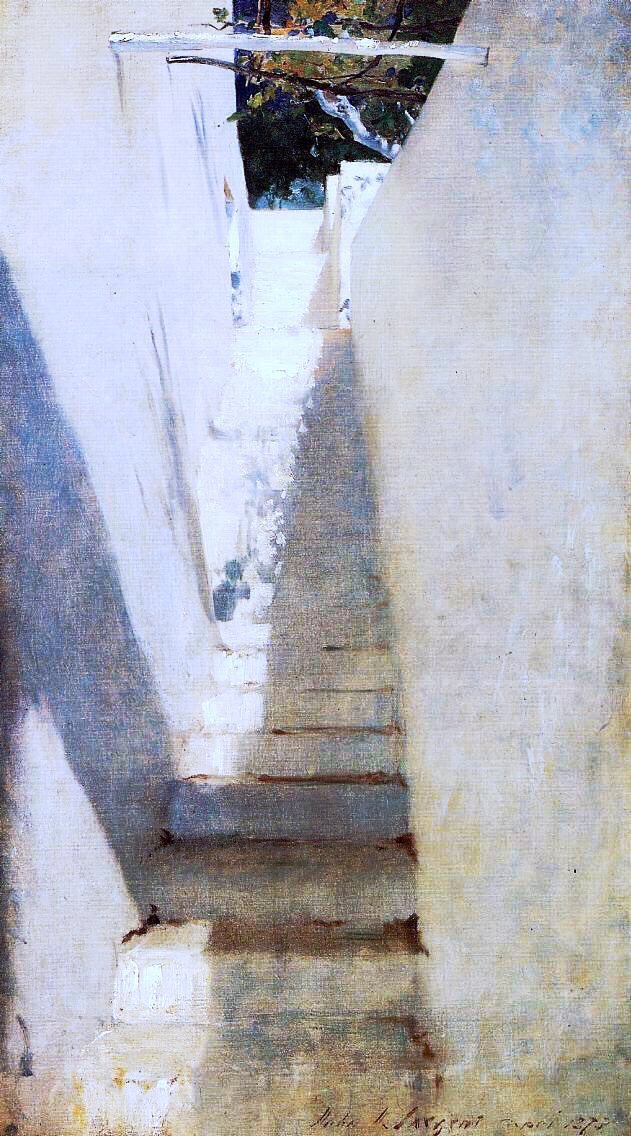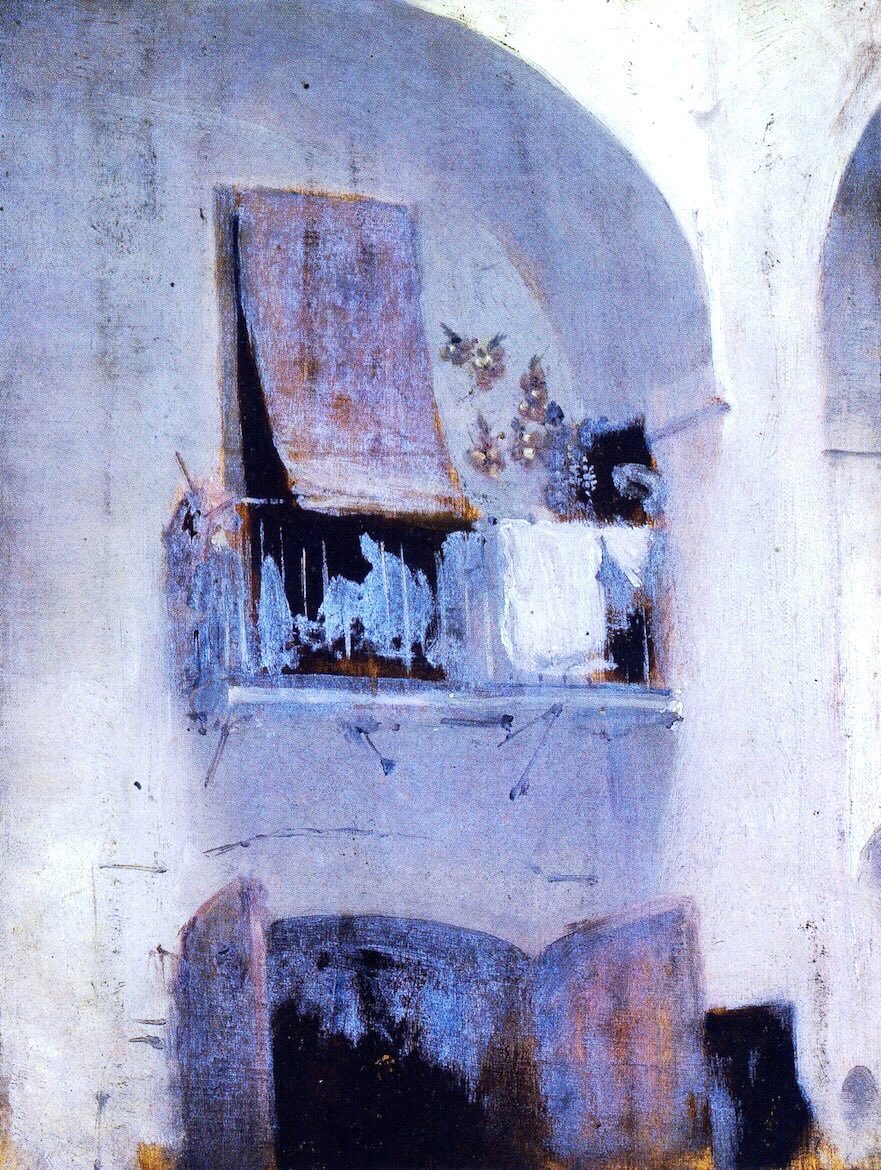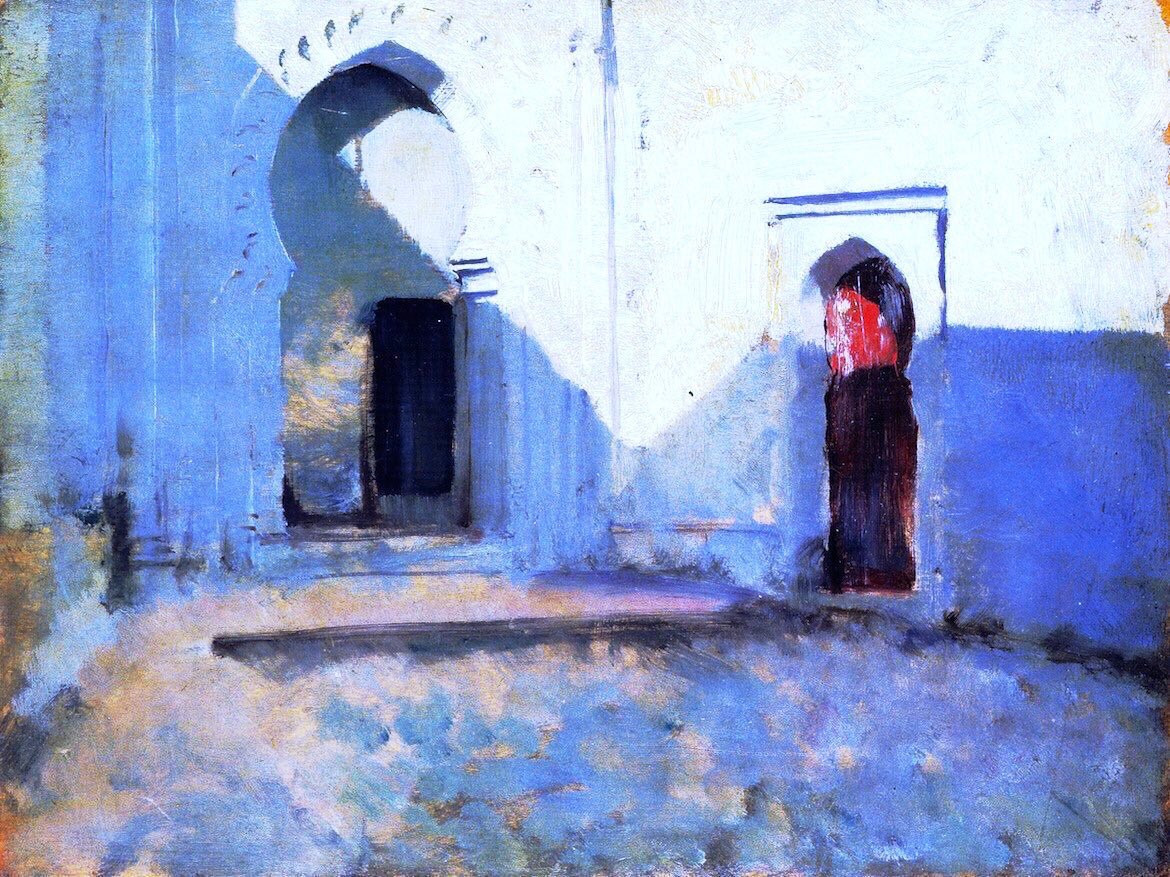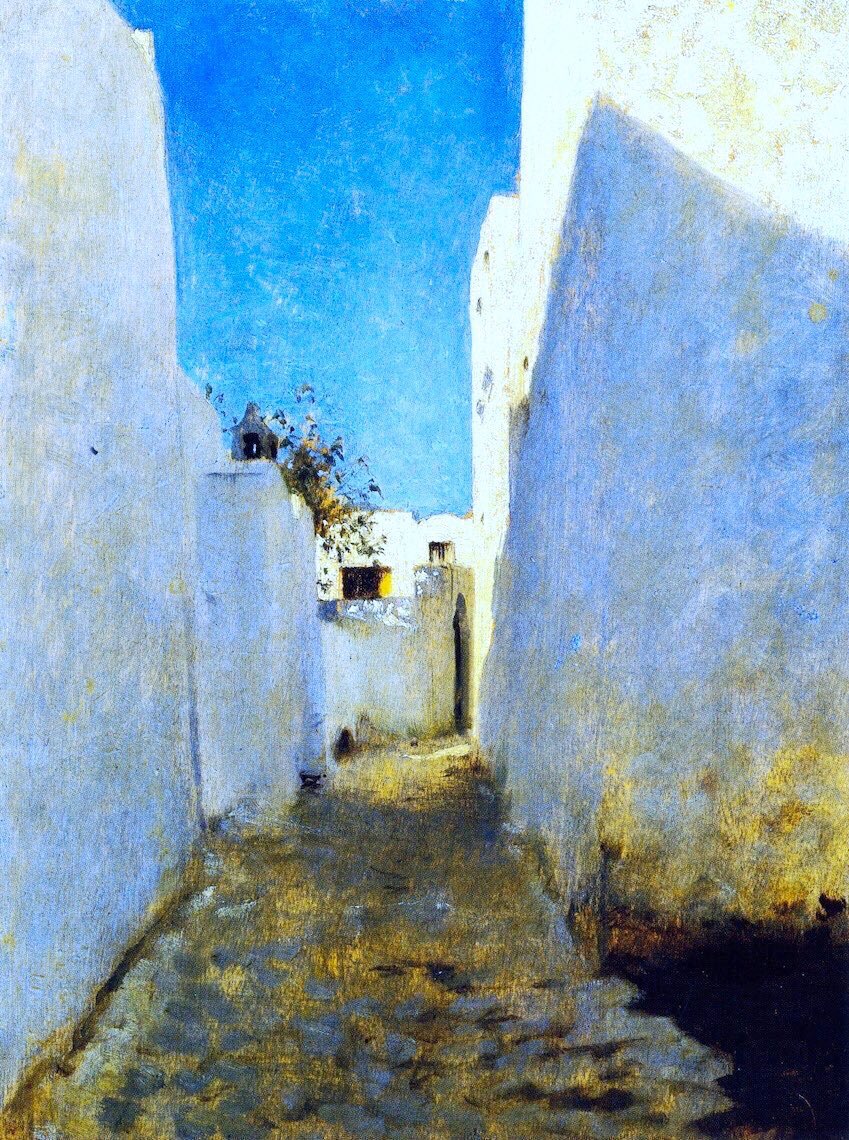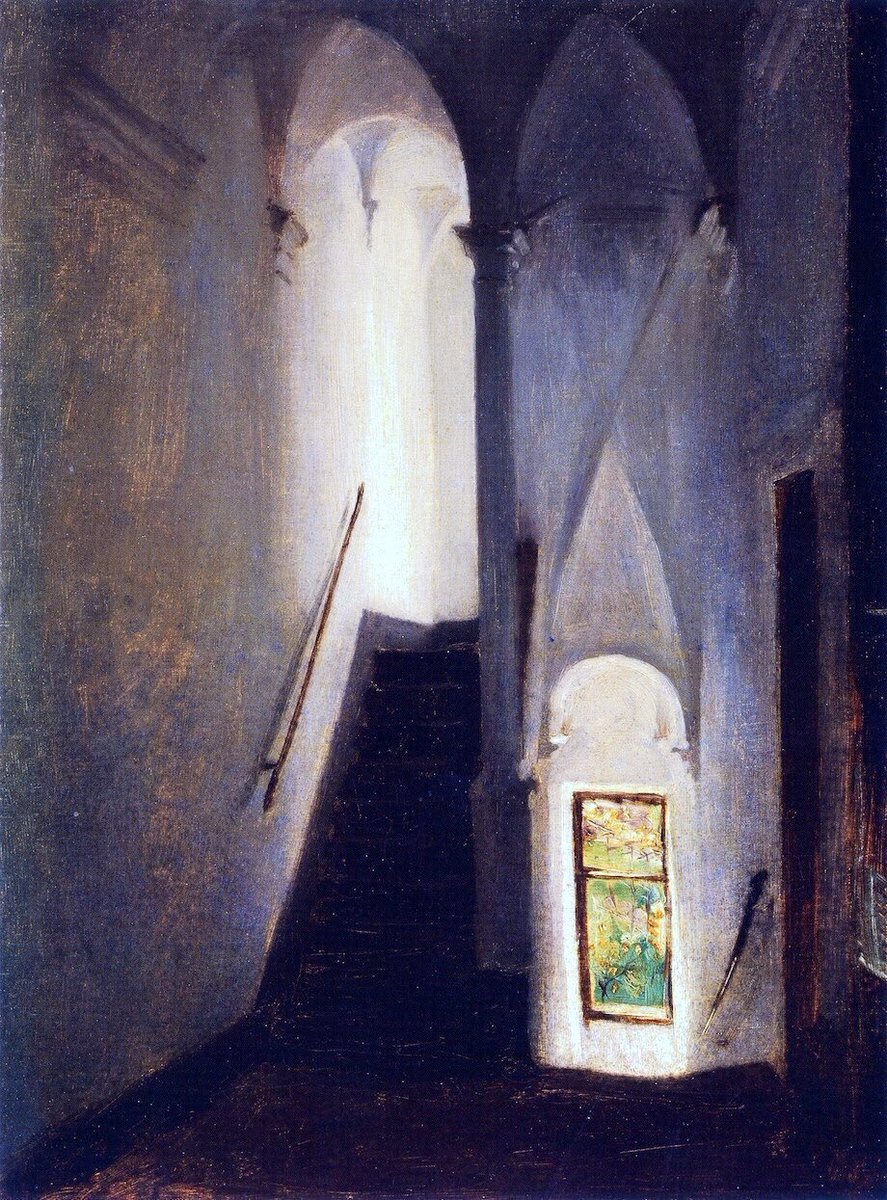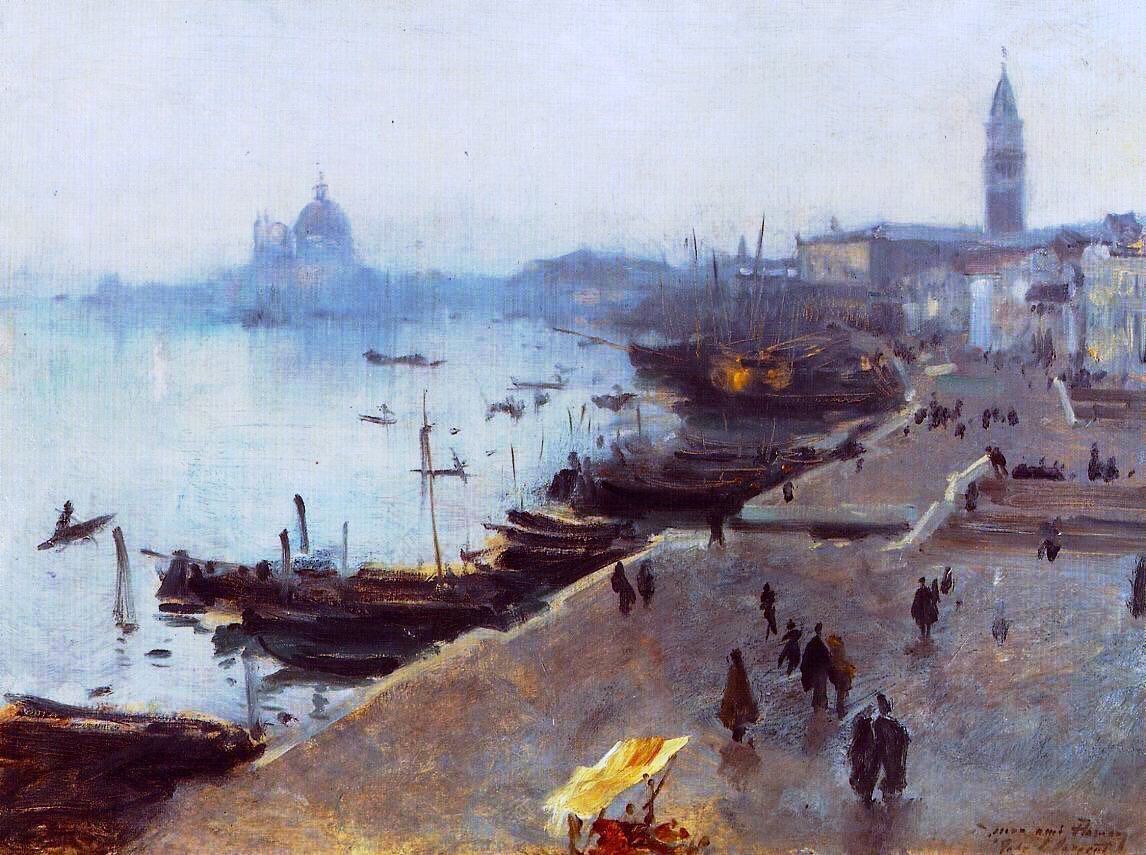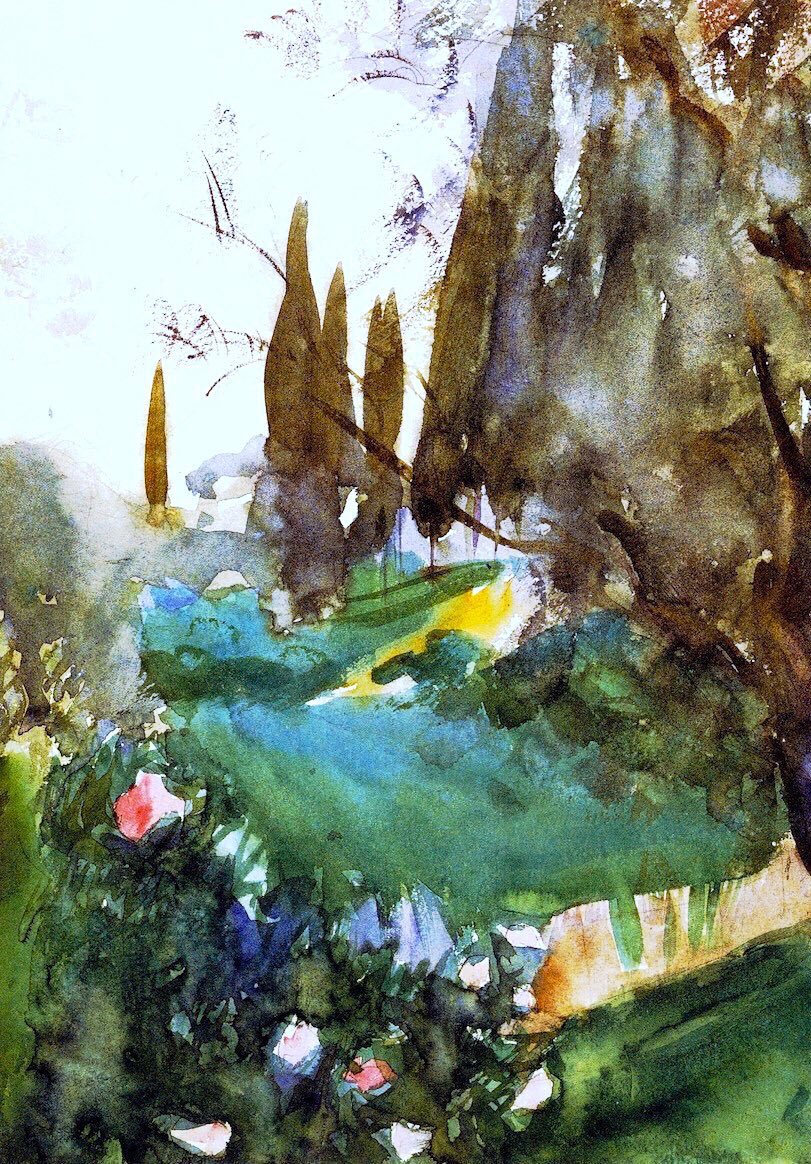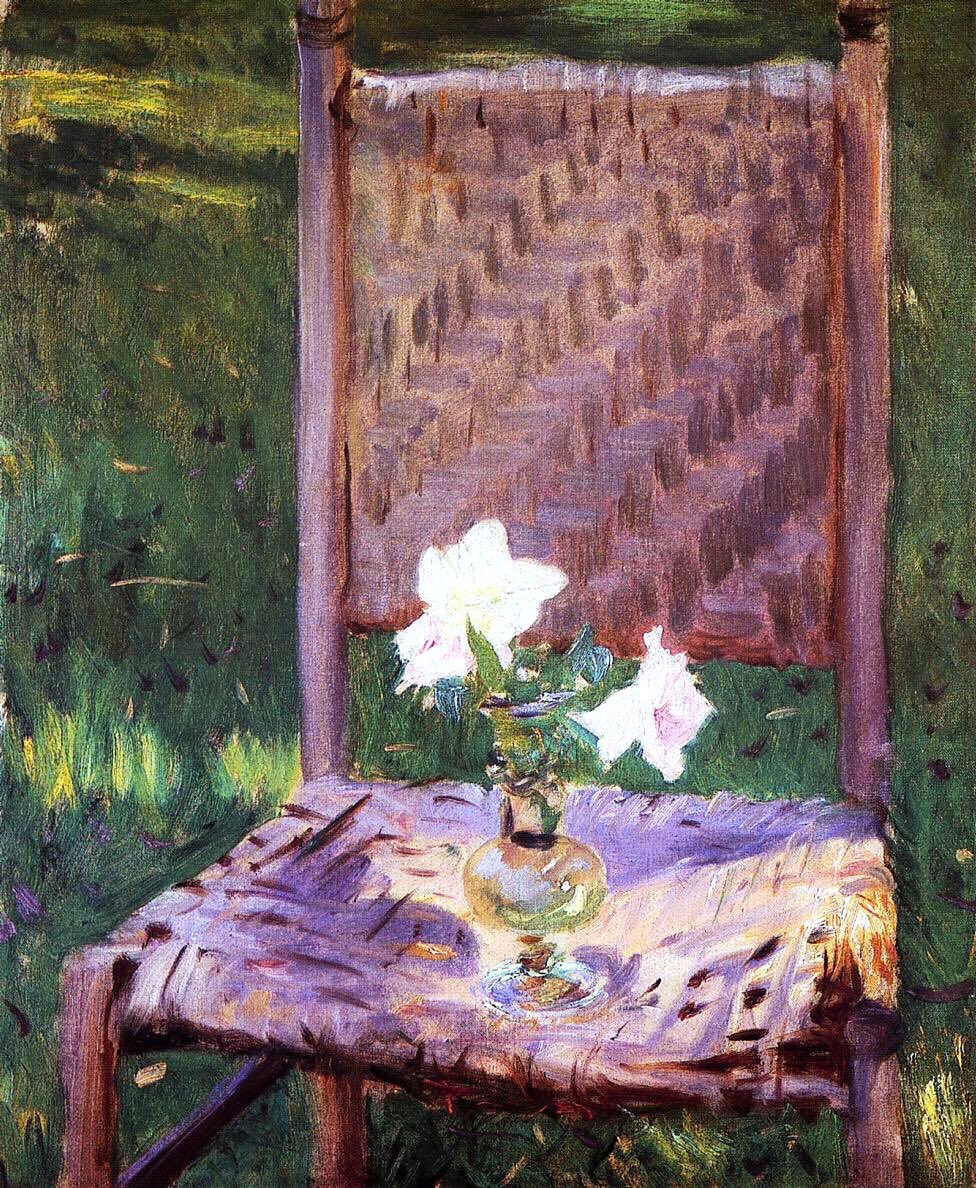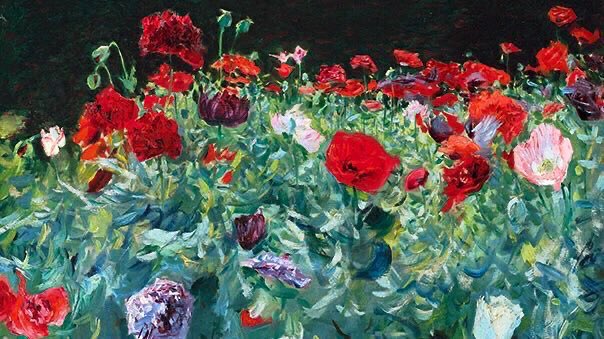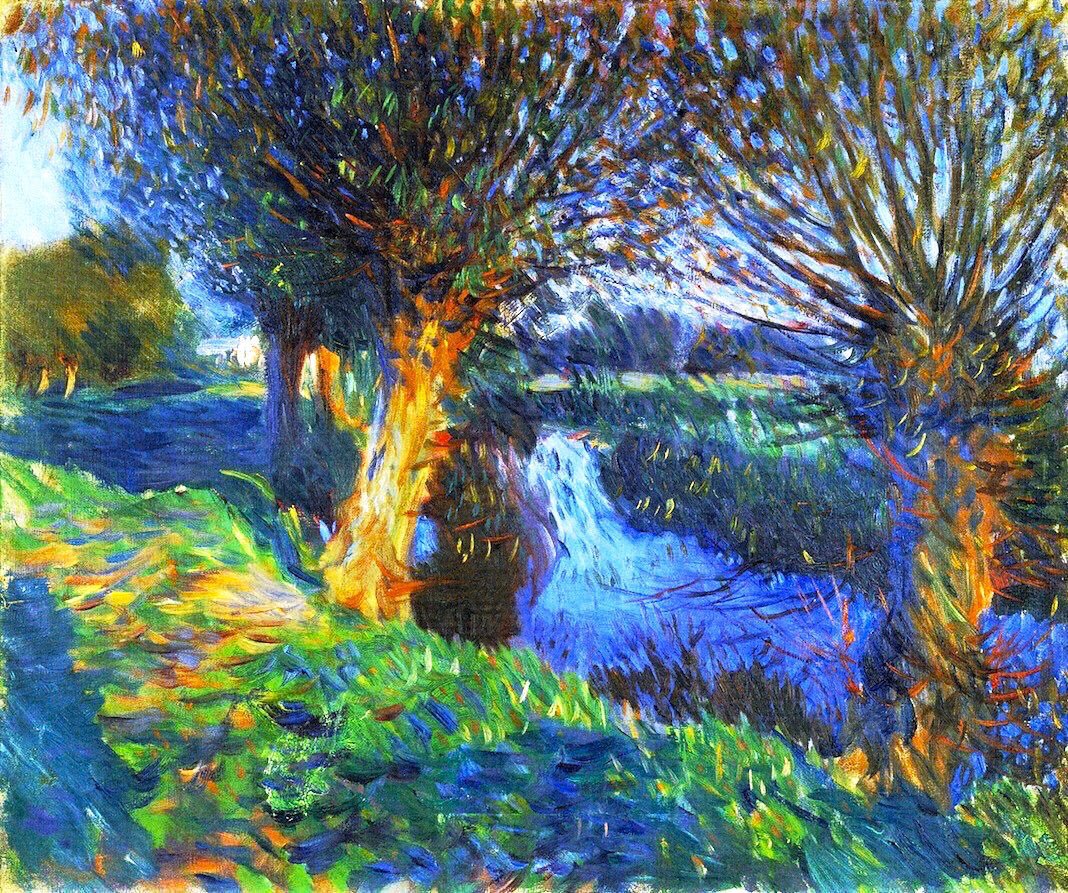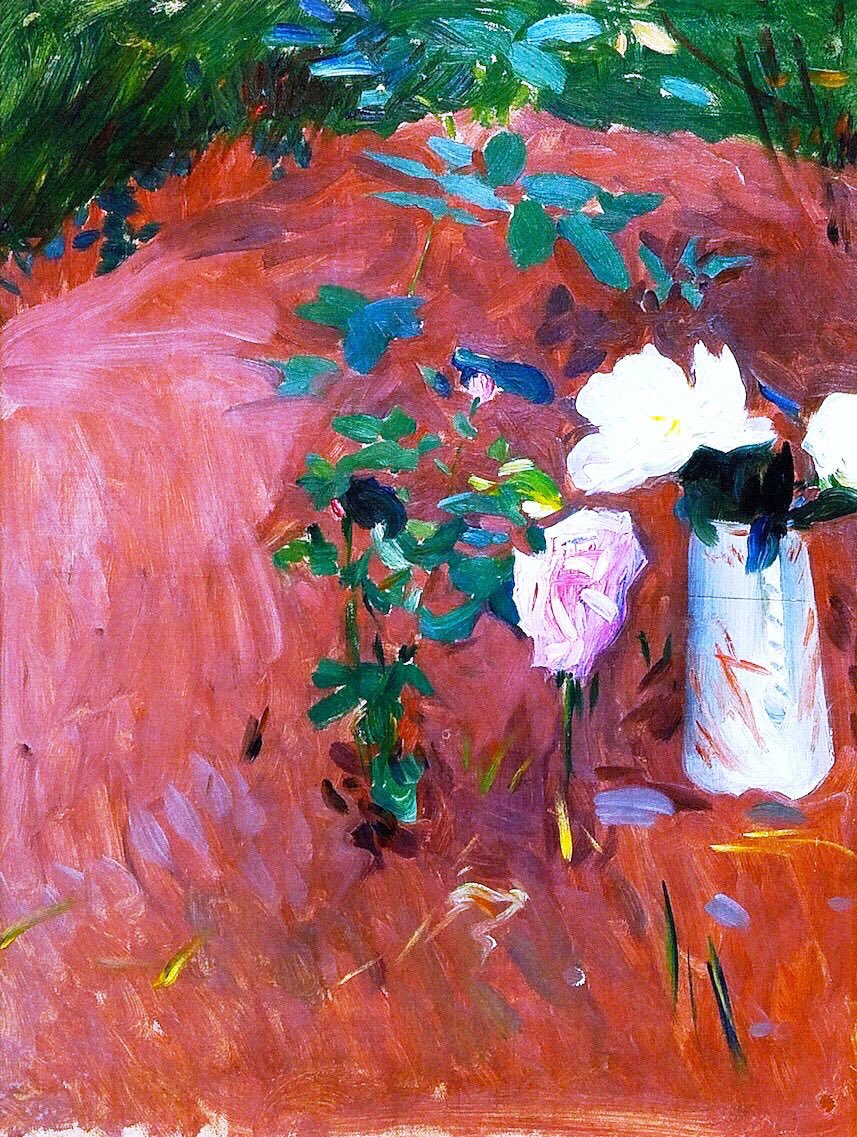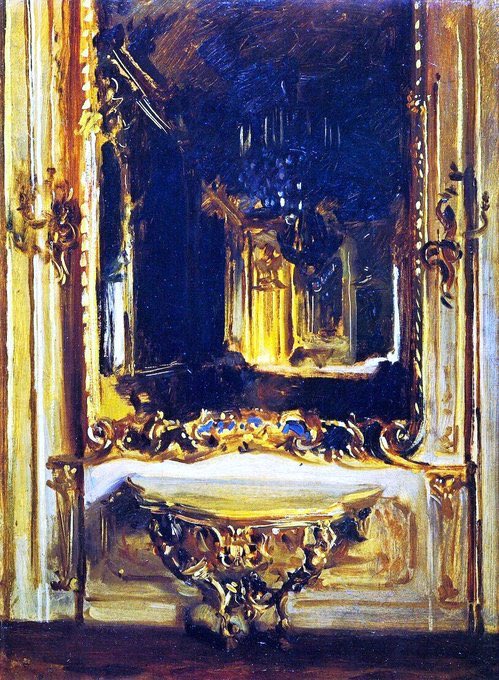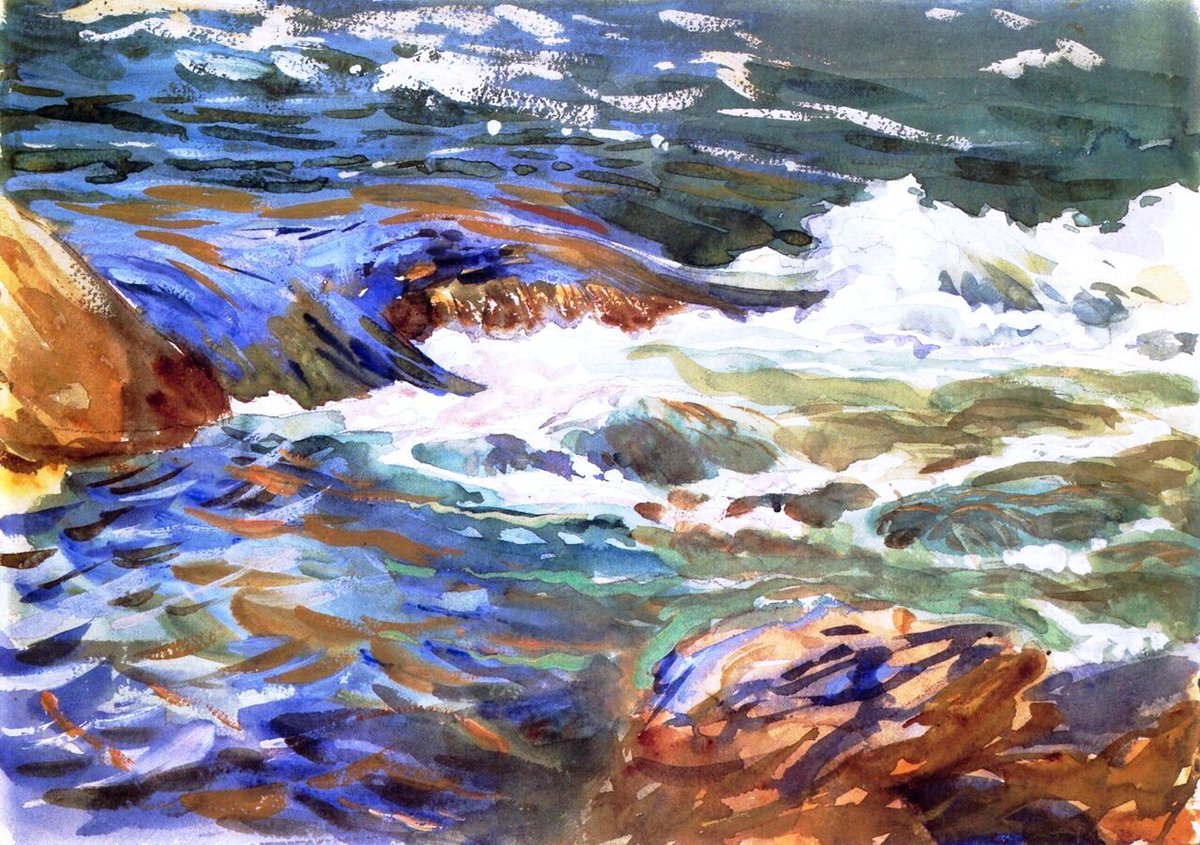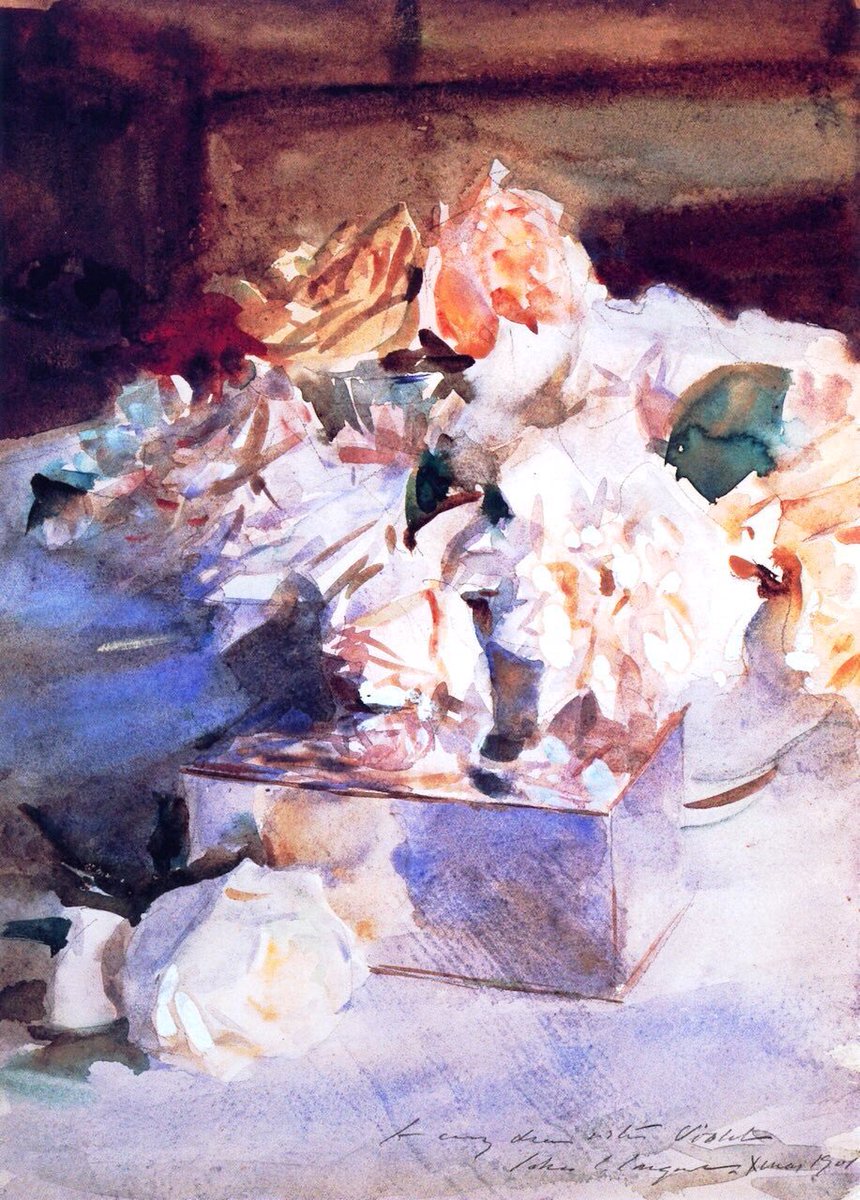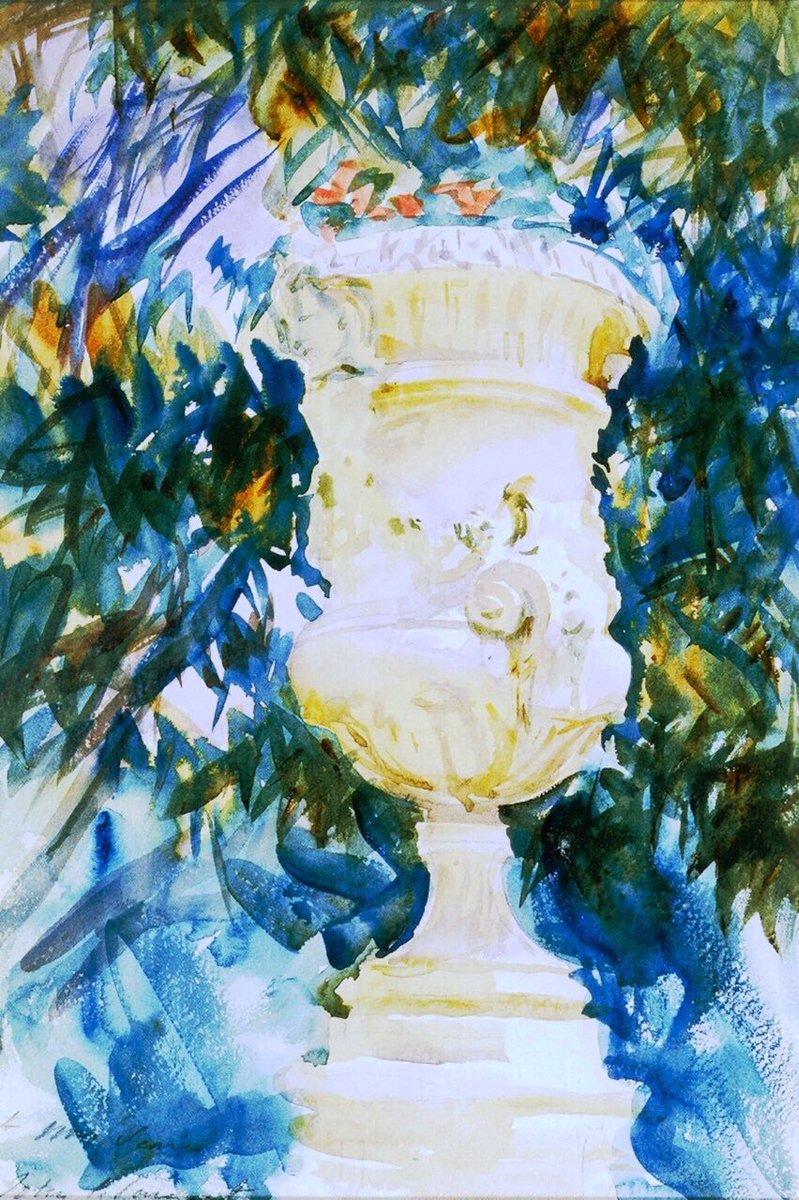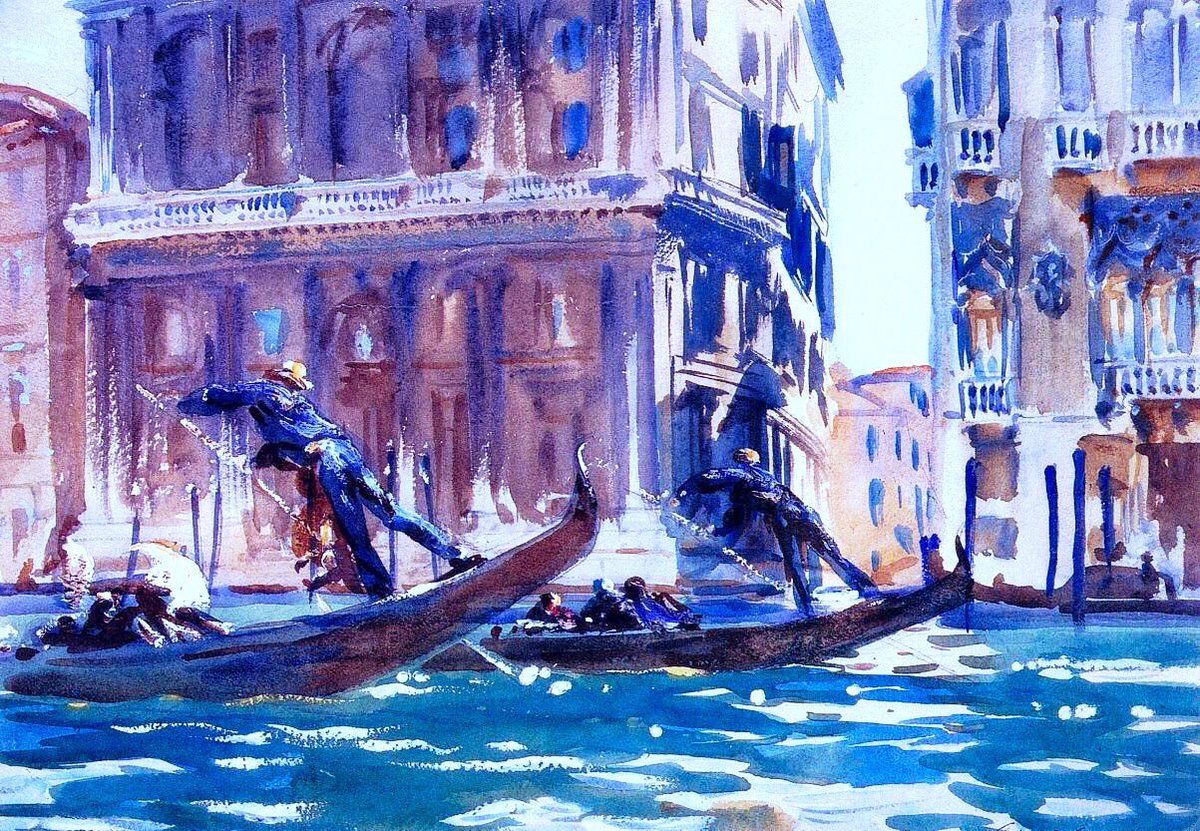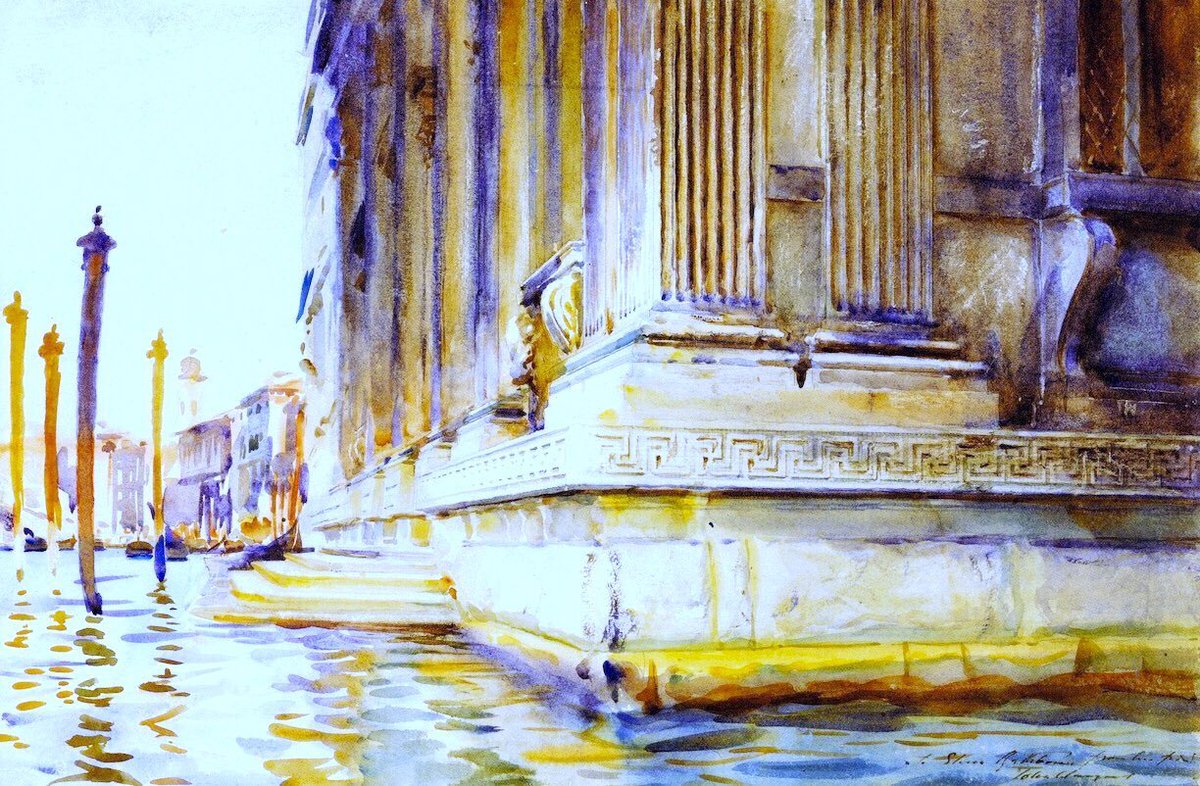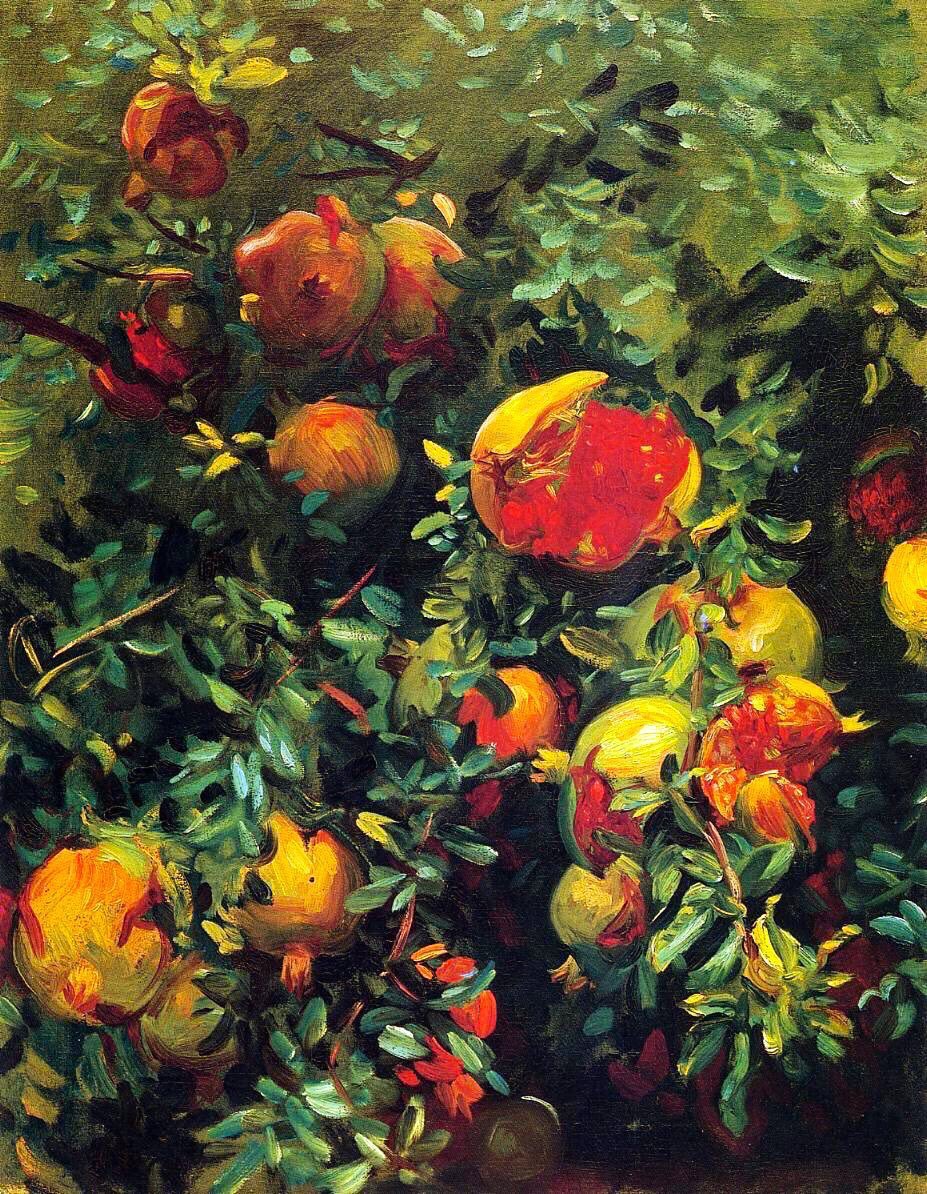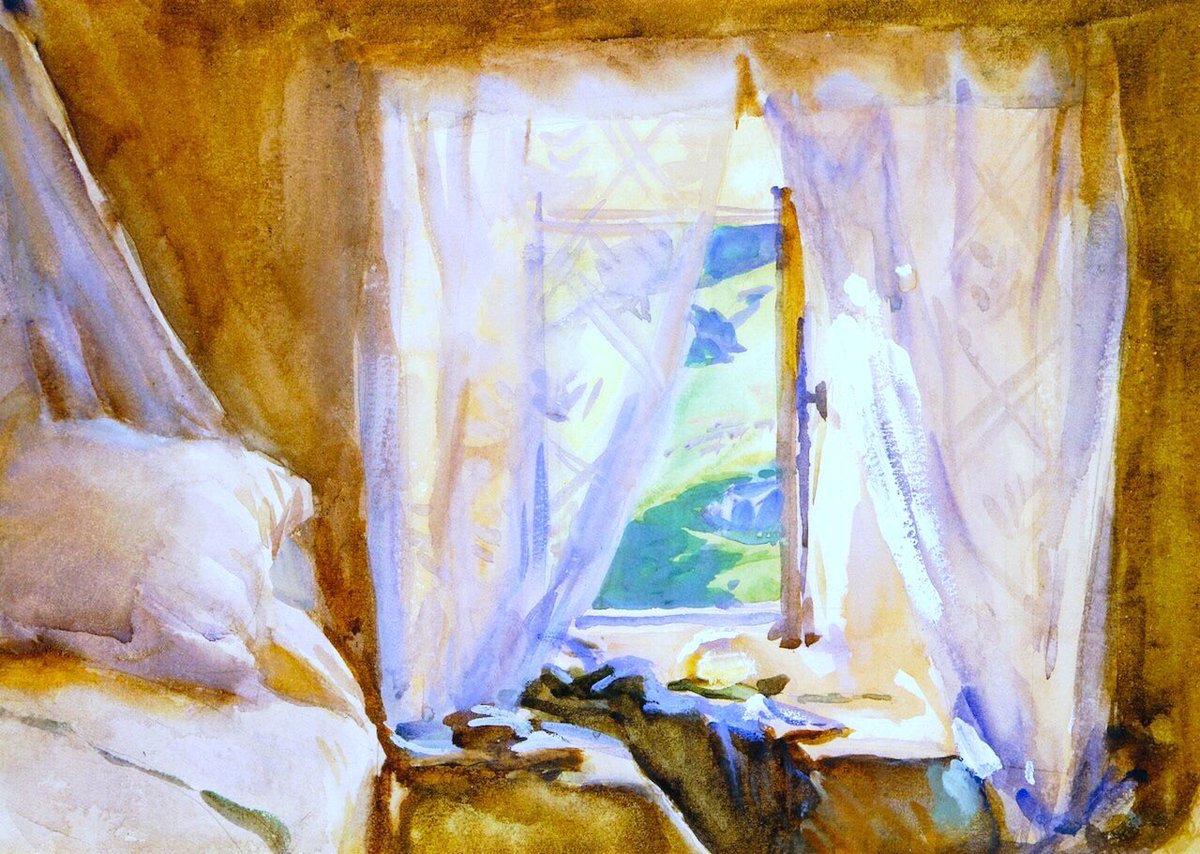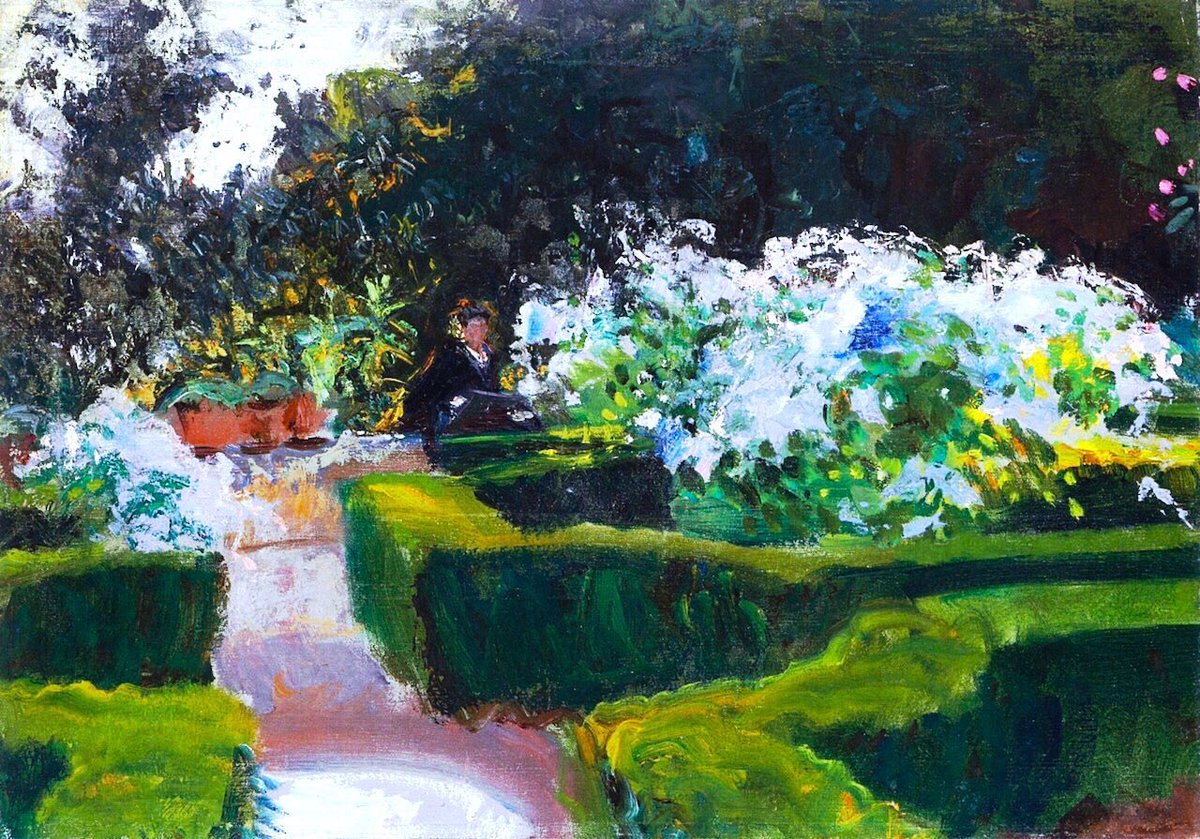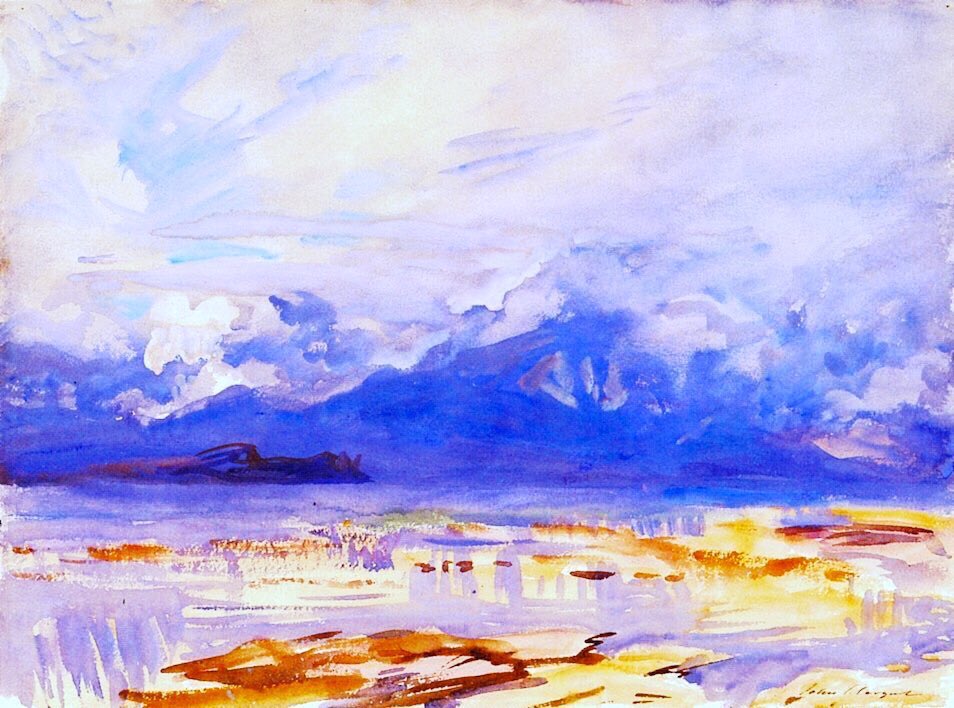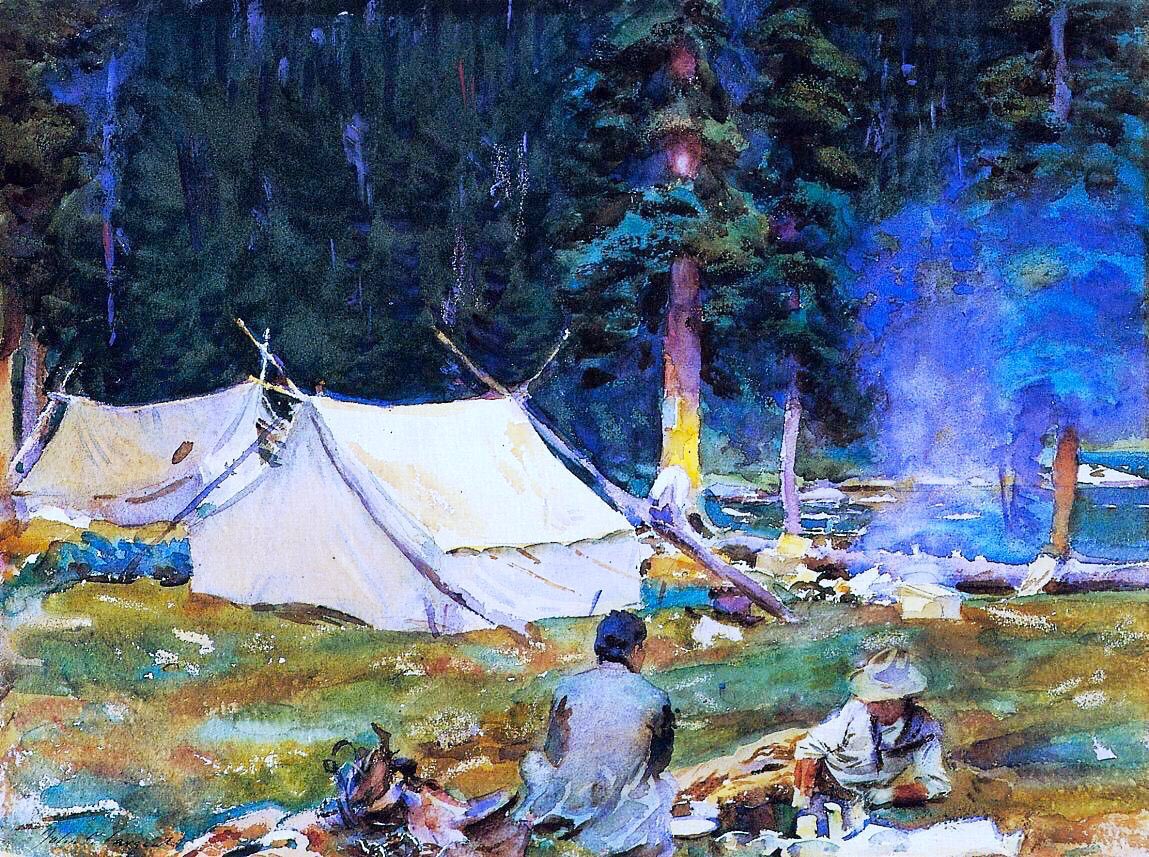Thread: John Singer Sargent (1856-1925) was one of the finest artists of the Edwardian period. Nowadays he is acknowledged for his bravura technical ability as well as his portraiture. However, let’s take a look at the work he did for himself. He died on this day
The works in this thread are generally for the artist’s own enjoyment & study. A theme that interested him was reflected light on white walls - a complex & challenging task. Wineglasses (c1875), Atlantic Sunset (c1876-7) & Staircase in Capri (1878)
I have a one-off offer to celebrate my 50th birthday where everyone can acquire some of my work. Take a look! https://twitter.com/robertbohan/status/1249804409057525760">https://twitter.com/robertboh...
Here we see two more of his white wall studies. By contrast here is a colourful garden in evening light. Corner of a Garden (c1879), The Balcony (c1879-80) & Entrance to a Mosque (1880)
Adding to the complexity of understanding the effects of light on white walls are his interest in contrast between direct & indirect light. Interior with Stained-Glass Window (c1880), A Moroccan Street Scene (1880) & Staircase (c1878-80)
Sargent has long been associated with striking watercolours of Venice. These astounding observations avoid chocolate box effects for studies of light & humidity. Venice (1880-1), Venice in Gray Weather (c1880-2) & Landscape with Cypresses (c1883)
Few artists (with the exception of Velázquez) had such technical genius in understanding the use of paint both in colour & application. His thistles are remarkable for that alone. Thistles (c1883), Candelabra with Roses (c1885) & Landscape at Broadway (c1885)
Sargent appears to have fallen in love with the landscapes he visited, in this case the Home Counties in England. Perhaps only he could capture the essence of this Romantic landscape. Hollyhocks (c1886), Home Fields (c1885-6) & Millet’s Garden (1886)
He had a superb eye. To place flowers on a battered chair, to observe a perfect composition & to understand how the flowers would be translucent yet the chair absorbent of light is genius. The Old Chair (1886), Poppies (1886) & At Calcot (c1882)
Although aware of Impressionism & friends with Monet, Sargent created his own style. Some have criticised it as art for art’s sake. That is to miss his joy in authentic observation. Garden Sketch (1890), Country Road in Winter (c1891-3) & Still Life with Daffodils (c1891-4)
He created Edwardian images that still speak to us & his work has come to symbolise that time. His constant goal was light & colour. The Rococo Mirror (c1898), In Norway (1901) & Roses (1901)
Sargent was one of the greatest masters of watercolour, too. His technique is awe-inspiring to anyone who has ever picked up a brush. A Garden Vase (1903), On the Canal (1903) & Palazzo Grimani (c1904)
These three watercolours demonstrate his startling ability to capture the dynamics of light & water. Purtud, Bed of a Glacier (1904), In a Levantine (c1905-6) & A Mountain Stream (1907)
One of my favourite images by him is of a bedroom window. Sargent was gay at a time when it was criminal. That window possibly represents his desire to let the light in & perhaps to reveal himself. Pomegranates, Majorca (1908), Florence, A Garden (c1910) & Bedroom (c1909-11)
He captured luscious gardens, powerful light, landscape & his hidden desires. Garden at Grenada (1912), Sirmione (1913), Camping at Lake O’Hara (1916) & Florida, Wharf & Boats (1917)
Sargent was a war artist who memorialised the innocence & horror of war. Here is his painting of an early graveyard. A War Memorial (1918), The Artist Sketching (1922) & Woods in Maine (1922). His work is that of a great artist constantly seeking the light.
Here’s more on my work. It’s first come, first served so do let me know your choices as soon as you make your mind up! https://twitter.com/robertbohan/status/1250042506739421185">https://twitter.com/robertboh...

 Read on Twitter
Read on Twitter
